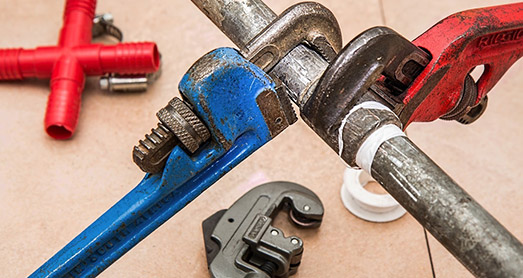Some homes suffer from condensation and damp which can lead to mould. Mould is usually found in places where there is poor air flow and cold spots.
We've outlined the most common causes of damp and mould, what you can do to reduce it and how we can work together to get to the root of the problem.
Your safety is our number one priority so we want to work with you to make sure you’re safe, warm and secure in your home at all times.
Download our leaflet on preventing damp and mould (pdf).
Report damp or mould in your home.
Videos: Tackling condensation, damp and mould
Watch our series of top tips, to help you combat damp and mould.
Condensation
There are lots of reasons why a home can be damp, but the most common cause is condensation. It’s normal to experience condensation in your home at some point. You will usually see it on your walls or windows when there’s a lot of moisture in the air or you’re producing a lot of steam.
Condensation happens when warm air cools and droplets of water meet cool surfaces, like a wall, window or tiles. This is why condensation happens more during the colder months.
Condensation can lead to damp which can cause black mould on walls, furniture and mildew on clothes, curtains and fabrics and can even damage plasterwork.
There are three main causes of condensation:
- Too much moisture in your home, often created by steam from cooking, showering or bathing
- Not enough ventilation for air to move around
- Your home is too cold
Damp
Damp is usually caused by condensation in places with little air movement that can’t dry out.
This is often as a result of inadequate ventilation or can sometimes be caused by building defects or leaking pipes.
Mould
Mould appears as sooty black speckles that can cluster in dark damp patches on ceilings, walls, furniture, carpets or possessions. Mould spores carry a musty smell often associated with a damp house. It can become a serious problem if it’s left untreated.
How to avoid condensation, damp, and mould
There are three things you can do to reduce condensation:
1. Reduce moisture in the air
Some ordinary activities produce a lot of moisture very quickly. By doing the following, you can reduce less moisture in your home:
- If you have an extractor fan, use it – this is really important
- Wipe down your windows, windowsills and walls regularly
- Open a window or trickle vent for at least 20 minutes after showering bathing or cooking
- If you can, dry your clothes outdoors
- If you dry your clothes indoors, open a window if practical
- Keep a lid on saucepans as you cook
- When bathing, run the cold water first to reduce condensation rising.
Please let us know if your extractor fan doesn’t work.
2. Ventilate your home to remove moisture
Some of the ways to ventilate your home include:
- Keep all vents, trickle vents and air bricks open and clear
- Close doors when you’re cooking, washing clothes, bathing and showering
- Open a window for a short period of time each day
- If you use a tumble dryer, make sure it’s vented to an outside wall
- Leave a gap between your furniture and external walls to help the air circulate
- Ventilate cupboards, wardrobes and drawers and avoid overfilling them.
3. Reduce ‘cold spots’
You can:
- Set your thermostat at a steady temperature above 16 degrees for all rooms. This will reduce condensation forming on external walls
- Consider rearranging your room. Sometimes furniture, like sofas, can take all the heat from a radiator.
How to treat mould
If you get mould in your home, here are some tips to deal with it and prevent it:
- Don’t brush or vacuum it as it will release mould spores into your home
- Use a mould treatment (fungicide) that has a Health and Safety Executive approved number and follow the manufacturer’s instructions precisely. Don’t try to remove it without using a treatment product as it may cause the problem to get worse
- After treatment, redecorate using a mould-resistant paint or wallpaper paste to help prevent the mould returning. These are available from most DIY shops
- Shampoo or wash any carpets, clothes or furniture that have been affected
- Remove the cause of the damp. For example, if condensation or damp was caused by a leak, dry out the affected area thoroughly.
Other options for treating mould
If you have tried all of these things but you’re still struggling to keep your home free from damp and mould, please contact us to see how we can help.
An experienced surveyor will come to your home to identify what’s causing the problem and how we can address any problems together.
Your home may be affected by more serious issues, such as:
- Leaking or blocked gutters, downpipes and overflows
- A leaking roof
- Internal water leaks
- Poor insulation
- Rising or penetrating damp or
- Structural issues.
Financial support and guidance
We understand that it may be hard to heat your home, particularly with increasing energy costs.
If you are facing money worries or you’re concerned about paying your bills, we can help.
Our specialist advisors provide financial support and guidance and can help you apply for grants and benefits you may not realise you’re entitled to as well as help reduce your utility bills and outgoings.

Repairs to your home
Everything you need to know about looking after your home. Find out what is your responsibility to maintain, what is ours, along with emergency and routine repair timescales.
Find out more